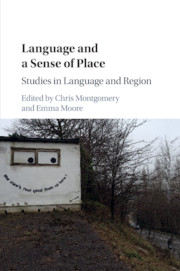Part I - Changing Places
Published online by Cambridge University Press: 13 July 2017
- Type
- Chapter
- Information
- Language and a Sense of PlaceStudies in Language and Region, pp. 13 - 104Publisher: Cambridge University PressPrint publication year: 2017



